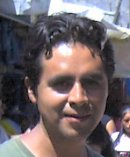|
Plenary
Lecture
The Use of Iron Oxide Nanostructures for Arsenic Removal
from Drinking Water

Dr. Arturo I. Martinez
Center for Research and Advanced Studies
National Polytechnic Institute at Saltillo
Mexico
E-mail: mtz.art@gmail.com
Abstract:
Arsenic has been classified as one of the most toxic
and carcinogenic element. Arsenic contamination of water
is a important problem in several countries around the
world. This pollutant has been recorded by the World
Health Organization as a first priority issue, and
maximum concentration limit in drinking water has been
reduced to 10 mg/L by several organizations. Iron oxides
are very active materials for arsenic removal from
waters. In order to maximize the arsenic adsorptive
properties of iron oxides, the use of nanostructures is
described. Iron oxide thin films and nanoparticles have
been prepared by different methods, such as spray
pyrolysis, co-precipitation, and thermal decomposition.
Thin films were deposited on glass substrates with the
hematite phase, whereas synthetized nanoparticles shown
the magnetite and maghemite phases. The influence of the
temperature is related with the structural, optical and
morphological characteristic, and its role on the
arsenic removal properties of iron oxide nanostructures
is studied. Also, their stability, re-use, and long term
use of the nanostructures is described in this paper.
Brief Biography of the Speaker:
Arturo I. Martinez received the Ph. D. degree in
Physical Chemistry from the National Autonomous
University of Mexico. Currently, he is a Scientist at
the Center for Research and Advanced Studies of the
National Polytechnic Institute in Saltillo, Mexico. His
research interests are in preparation and
haracterization of thin films and nanostructures of
metal oxides, which include those of transition and main
group metal ions. The classes of materials on which his
research has focused include metal oxide thin films and
semiconductors, for applications in photocatalysts,
radiation detectors, electrochromism and water
remediation. He has integrated students into his
research projects to the extent that many of them have
been included as co-authors on research papers given at
international research meetings and published in peer
reviewed research journals. He is the author and
co-author of over 50 contributed and invited scientific
presentations, refereed journal publications, book
chapters, and invited seminars at universities.
|
